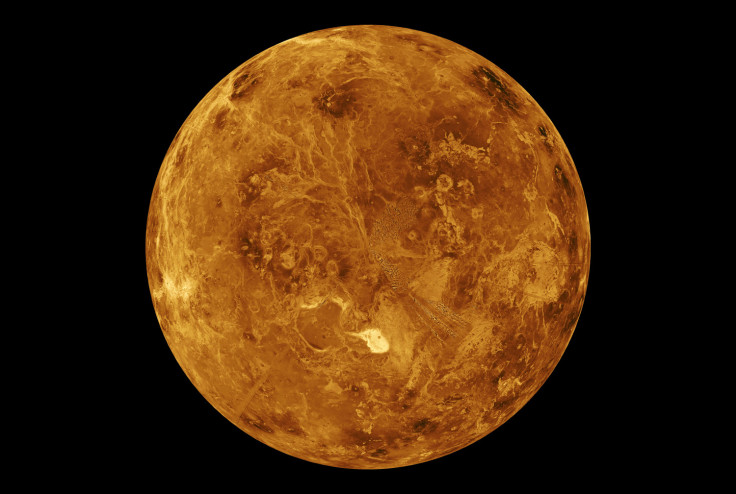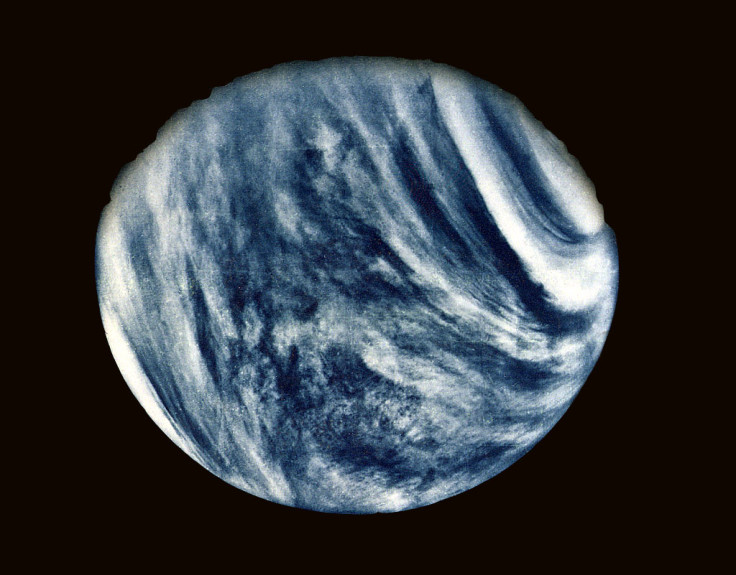Why can't Venus support life? Planet's extreme heat could be down to a lack of volcanoes
If Venus had more volcanoes, its temperature would be lower and it could even have oceans.

Sami Mikhail, University of St Andrews
In the quest to discover habitable planets, scientists look for qualities similar to those of Earth. We do this because Earth sustains life, of course, but it falls down when you consider Venus. Based on size, chemistry and position in the solar system, our neighbouring planet is the most Earth-like ever observed. Yet while Earth is the definition of habitable, the planet Venus is a barren, hot, hellish wasteland.
Geologists like myself are trying to understand why two almost identical planets became so different. This is one way we can assist the astrophysics community in the exciting hunt for habitable exoplanets. A key part of the puzzle is understanding the interplay between plate tectonics and volcanoes, since this governs the chemistry of the air that supports life.
I have been part of a research collaboration to look at Venus' volcanic history, the results of which have just been published in the journal Physics of the Earth and Planetary Interiors. This study sheds some valuable light on the volcanic history of Earth's sibling, and indirectly speaks towards how Venus became so hot in the first place.
The starting point to understanding Venus is the climate. The average surface temperature is 460℃ – far too hot for liquid water and above the known thermal limit for life, which is roughly 122℃.
This extreme heat is not simply because Venus is closer to the Sun, but also because it is enveloped by an über-greenhouse atmosphere. At 92 times the pressure of that on Earth, it's enough to crush modern submarines. If you were standing on the Venusian surface it would be like swimming 1,000 metres below sea level – if the oceans were 460℃, that is.
The scorching temperature of Venus's surface has many knock-on effects. It means, for example, that there's no Earth-like plate tectonics. Most of the crust is too soft to snap, and it "heals" when broken. There have recently been suggestions that the planet might either have its own alternative version of plate tectonics, or that the high surface temperature results in the Venusian crust being physically decoupled from mantle flow beneath. At any rate, where plate tectonics is behind 90% of volcanic eruptions on Earth, this is not the case on Venus.
Venus does have volcanoes, but they're all of the variety we call intra-plate or hotspots, where plumes of magma rise up from the mantle and push their way to the surface via cracks in the crust. To study them, we compared them to the ones on Earth. We only considered volcanoes situated on Earth's oceanic crust, since it is more comparable to the Venusian crust.

The oceanic crust covers 60% of Earth's surface. It is host to more than 100,000 hotspot volcanoes that have formed in less than 100m years. Conversely, Venus' entire surface has produced only 70,000 individual volcanoes over a period of some 700m years (give or take 300m) – roughly the age of its outer crust. In other words, the difference in the rate of intra-plate volcano production is roughly ten times. (And bear in mind this is a comparison against only a small minority of the total number of volcanoes on Earth since it was formed.)
Time travelling with argon
To investigate whether Venus was always so volcanically challenged over its approximately 4.6 billion-year history, we called on the services of argon (Ar). This noble gas comes in three "flavours", each with a slightly different mass (36, 38 and 40). We know that when Venus and Earth formed, 99% of their argon-36 and argon-38 quickly ended up in the air.
On the other hand, the argon-40 was only able to emerge slowly from the decay of an isotope of potassium that is stored in rocks. To find its way into the air, it then needed a mechanism to transport it there – the most efficient being volcanism. Because Earth's atmosphere nowadays contains significantly more argon-40 than Venus's, we can therefore assume Venus has been less volcanically active for its entire existence.
This conclusion probably sounds counter-intuitive – you might expect a hotter planet to be more volcanically active, not less so. When we studied this using rock deformation data, we found a similar phenomenon to the one that prevents plate tectonics on Venus. Because the crust is more like Play-Doh than the toffee brittle of Earth's crust, it is difficult for magma to move through cracks and form volcanoes. On Venus, we predict, that most magma gets stuck in the Play-Doh – as you can see from the diagram below.
Incidentally, this lack of argon-40 in Venus' atmosphere also probably explains why the planet has never had oceans. This is because the decaying potassium-40 that produces argon-40 exists within silicate minerals. Importantly, the crystal structure of silicate minerals also contains hydroxide anions, which is essentially water.
Indeed, the silicate mantles of both planets can store more than six times the mass of water present in Earth's oceans. In other words, Earth's volcanoes not only pumped out life-giving air, but also our oceans.
Furthermore, the great difference in the number of volcanoes may explain the runaway greenhouse effect on Venus. This is because fresh basalt exposed by volcanic eruptions can react with liquid water through a series of chemical reactions known as carbonation to remove carbon dioxide from the atmosphere. It is an excess of carbon dioxide that is responsible for the greenhouse effect. In short, it is no exaggeration to suggest that volcanoes may explain most of the fundamental differences between Earth and Venus.
For those of us at the St Andrews Centre for Exoplanet Science, we'll now return to the big picture. We aim to shed more light on how planets become habitable, and how to spot an Earth from a Venus at a distance so great it's measured in light years. It's certainly difficult doing this from Earth, but with a great set of PhD students, postdoctoral fellows and an open mind, I am confident we will get to the bottom of it.
Sami Mikhail, Lecturer in Earth Sciences and Environmental Sciences & the Center for Exoplanet Science, University of St Andrews
This article was originally published on The Conversation. Read the original article.
© Copyright IBTimes 2025. All rights reserved.





















